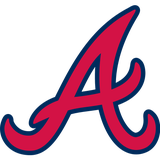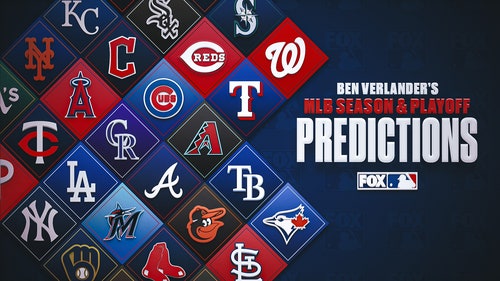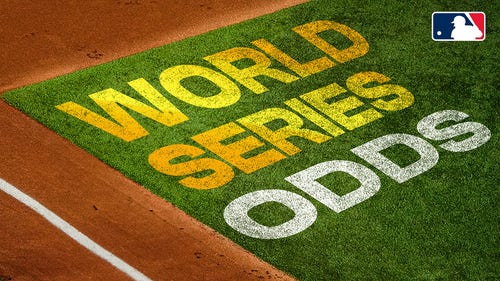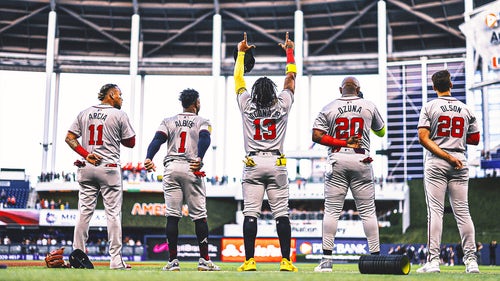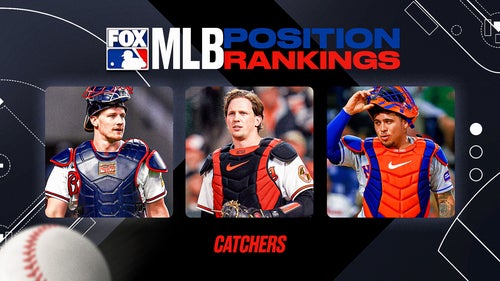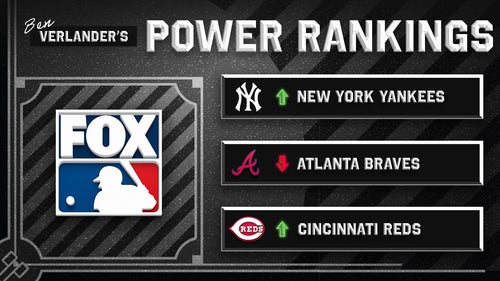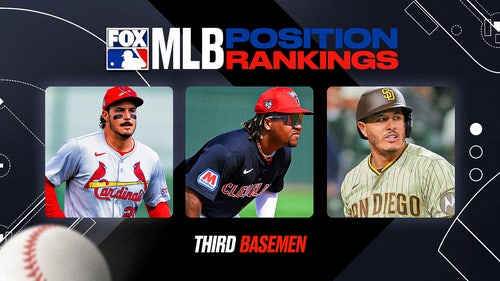
JAWS and the 2017 Hall of Fame ballot: One-and-done players, Part 1
Having written at length about 15 holdover candidates and four newcomers on the 2017 BBWAA Hall of Fame ballot, it's time to attend to the other 15 first-time candidates. Their stays on the ballot are likely to be short, as they won’t receive even the 5% of the vote necessary to retain eligibility—no great injustice, given that their JAWS are at least 18 points below the standards at their positions (my threshold is generally 20 points, but the calendar and common sense didn’t allow for that this year). All the same, these players' careers are worth another look before they head off into the sunset. Some were Hall of Fame-caliber talents whose bodies couldn’t hold together for long enough to make a serious bid for Cooperstown. Others were late-bloomers for whom reaching the 10-year minimum required to appear on the ballot was a triumph unto itself.
My annual project would not be complete without including them. This is the 14th year I’ve evaluated candidates using JAWS (which didn’t acquire its catchy name until a little over a year in), and I’ve never let one go by. For this year’s group, I've split the 15 into three installments: pitchers, catchers and first and second basemen in the first one; shortstops and third basemen in the second one; and outfielders in the third one.
Tim Wakefield
| pitcher | career | peak | jaws | w | l | s | era | era+ |
| Tim Wakefield | 34.6 | 24.9 | 29.8 | 200 | 180 | 22 | 4.41 | 105 |
| Avg. HOF SP | 73.9 | 50.3 | 62.1 |
Wakefield spent most of his 19 seasons (1992–93, '95–2011) as the majors' primary devotee to the knuckleball. In a high-scoring environment, his rubber arm made him a useful innings-eater for the Red Sox, whom he helped to seven postseason appearances. While he struggled to a 6.75 ERA in October and most notably served up the pennant-winning home run to the Yankees' Aaron Boone in the 2003 ALCS, he was also part of the Red Sox' '04 and '07 championship teams.
Wakefield was drafted by the Pirates as a first baseman out of the Florida Institute of Technology in 1988, but after hitting .199 in three stops over two seasons, he was steered to the mound, where he began developing his knuckleball. He got the hang of it quickly enough to be called up by the Pirates on July 31, 1992—two days before his 26th birthday—and tossed a 10-strikeout complete game against the Cardinals. He went 8–1 with a 2.15 ERA in 13 starts for a team that won the NL East, then added two complete-game victories in a losing cause in the NLCS against Atlanta.
His initial success proved fleeting: Wakefield was knocked around for a 5.61 ERA in 1993, spent all of '94 in the minors and was released by the Pirates the following April. Less than a week later, he caught on with the Red Sox, and from May 27 onward, he went 16–8 with a 2.95 ERA, helping the team win the AL East. He finished third in that year's Cy Young voting.

Wakefield became an institution in Boston. Though he had just two other seasons in which he finished with an ERA below 4.00, he threw at least 180 innings in a season for them nine times and at least 200 innings five times. From 1999 to 2002, he was a swingman, averaging 48 appearances, 16 starts and 158 innings; in the first of those years, he even saved 15 games. He served almost exclusively as a starter for the last nine years of his career, and at one point, he agreed to what amounted to a $4 million-a-year perpetual club option. He won both his 2003 ALCS starts before making his ill-fated extra-innings relief appearance, but unlike Bill Buckner, he was never scapegoated; indeed, he was beloved within the Boston community for his selflessness on the field and his charitable work off of it (of course, it helped that the Sox won the World Series the next year).
While injuries eventually cut into Wakefield's time, he pitched past his 45th birthday, setting franchise records for starts (430) and innings (3,006); he's second in games pitched (590) behind Bob Stanley (647), and his 186 wins for the Sox trail only Roger Clemens and Cy Young (192 each).
Arthur Rhodes
| pitcher | career | peak | jaws | w | l | s | era | era+ |
| Arthur Rhodes | 15.4 | 14.1 | 14.8 | 87 | 70 | 33 | 4.08 | 1.09 |
| Avg. HOF RP | 40.6 | 28.2 | 34.4 |
Look up "well-traveled southpaw" in the dictionary, and you're likely to see a picture of Rhodes with a battered suitcase in one hand and a boarding pass in the other. The venerable lefty pitched in the majors for 20 years (1991–2011, except for '07, when he underwent Tommy John surgery) for nine different teams. He made more appearances (900) than all but 24 other pitchers in baseball history and just five other lefties: Jesse Orosco (1,252), Mike Stanton (1,178), John Franco (1,119), Dan Plesac (1,064) and Eddie Guardado (908). He was tough on lefty hitters, holding them to a .217/.284/.327 line in his career, and posted a 3.43 ERA as a reliever during a high-scoring era.
A Waco, Tex. native, Rhodes was drafted out of high school in the second round by the Orioles in 1988. He spent parts of his first five major league seasons working primarily as a starter but was lit up for a 5.81 ERA in his 61 starts from 1991 to '96. Under manager Davey Johnson, Rhodes moved to the bullpen permanently in May 1996 and, working as a multi-inning reliever, became a key part of a unit that helped the Orioles win that year's AL wild card and the next year's AL East title; in '97, he whiffed 102 batters in 95 1/3 innings with a 3.02 ERA. Upon reaching free agency, he signed a four-year, $13.5 million deal with the Mariners in January 2000, pitching for two AL West winners. Unfortunately, he couldn't stay out of the way of the Yankees, who hit him hard twice in the 2000 ALCS, with David Justice's three-run homer in the seventh inning of Game 6 the decisive blow; including the regular season, he was roughed up for a 7.81 ERA against the Bronx Bombers in 91 career innings.

After leaving the Mariners, Rhodes passed through Oakland, Cleveland, Philadelphia, Seattle (again), Florida, Cincinnati, Texas and St. Louis. He earned All-Star honors for the only time in his career at age 40 with the Reds, posting a 2.29 ERA in 55 innings in 2010 and at one point going 33 consecutive appearances without allowing a run, tying the single-season major league record. In the wake of his All-Star selection, he opened up about the tragic death of his five-year-old son from an undisclosed illness in December 2008, which had spurred him to keep playing. He received an outpouring of sympathy from around the game.
Rhodes went out on top. Released by the Rangers in August 2011, he caught on with the Cardinals, and the two teams met in the World Series. He held his former teammates hitless in three one-batter appearances, the last of them by retiring Yorvit Torrealba while protecting a three-run lead in the seventh inning of Game 7.

Jason Varitek
| player | career | peak | jaws | h | hr | sb | avg/obp/slg | ops+ |
| Jason Varitek | 24.3 | 18.7 | 21.5 | 1,307 | 193 | 25 | .256/.341/.435 | 99 |
| Avg. HOF C | 65.1 | 41.5 | 53.3 |
A switch-hitting backstop, Varitek left his mark as a key piece in one of the great trades in Red Sox history, as Boston's regular catcher during the team's 2004 and '07 championship seasons and as the co-holder of the major league record for most no-hitters caught (four, tied with Carlos Ruiz). During his 15-year career, Varitek caught for seven playoff-bound teams, made three All-Star teams, won a Gold Glove, set a franchise record for games caught (1,488) and carved himself a spot in the lore of the storied Red Sox-Yankees rivalry for courageously keeping his mask and armor on during a 2004 fight with Alex Rodriguez.
Before he was even chosen with the 14th pick of the 1994 draft by the Mariners, Varitek had built a name for himself, winning both Baseball America's College Player of the Year award and the Dick Howser Trophy in '93. The Twins chose him with the 21st pick of that year's draft but were unwilling to meet the bonus demands of Varitek and agent Scott Boras. He returned to school for his senior season, helped Georgia Tech reach the College World Series finals the following year and was drafted by the Mariners, who assumed they had even more leverage than the Twins and offered him a lower bonus. Varitek instead signed a contract with the independent St. Paul Saints of the Northern League, and Boras filed a grievance on his client's behalf, saying as a professional player, he was no longer subject to the draft and would become a free agent.
The grievance was averted when the Mariners agreed to a $650,000 bonus in April 1995, at which point the 23-year-old finally began his pro career. But his stay in Seattle was short: On July 31, 1997, he and pitcher Derek Lowe were traded by the Mariners to the Red Sox for closer Heathcliff Slocumb, who saved 13 games and delivered a 4.97 ERA over the next season and a third; Varitek and Lowe, of course, went on to long and storied careers with Boston.

On Sept. 24, 1997, Varitek hit a pinch-single in his major league debut. The next year, he served as the backup to Scott Hatteberg, and in 1999—his age-27 season—he assumed the starting catcher duties, hitting .269/.330/.482 with 20 homers. Aside from 2001, when a broken arm sidelined him for four months, and '06, when a broken bone in his foot sidelined him for two months, he would start at least 106 games every year through '09. He hit .273/.351/.512 with a career-high 25 homers in 2003, his first All-Star season; that was the first of three straight years in which he posted an OPS+ of 120 or better, though beyond that, his bat was nothing remarkable (as his career 99 OPS+ attests).
After the 2004 season, the Red Sox named Varitek their team captain, their first since Jim Rice in the late 1980s. As for the no-hitters, he caught those of Hideo Nomo (April 4, 2001 against the Orioles, Lowe (April 27, 2002 against the Devil Rays), Clay Buchholz (Sept. 1, 2007 against the Orioles) and Jon Lester (May 19, 2008 against the Royals). Sixteen catchers have caught three no-hitters—some reaching that plateau more recently—but Varitek was the first to four.
Though he hit just .237/.292/.452 in 252 postseason plate appearances, Varitek’s 11 homers are tied with fellow 2017 ballot debutante Jorge Posada for the most playoff round-trippers by a catcher. His signature postseason moments came behind the plate: his blocking the plate to prevent Oakland's Eric Byrnes—who then limped around in foul territory, lost in his own world—from scoring in Game 3 of the 2003 Division Series, and his catching strike three from Jonathan Papelbon against the Rockies' Seth Smith to complete Boston's sweep of the 2007 World Series.
Derrek Lee
| player | career | peak | jaws | h | hr | sb | avg/obp/slg | ops+ |
| Derrek Lee | 34.3 | 27.2 | 30.7 | 1,959 | 331 | 104 | .281/.365/.495 | 122 |
| Avg. HOF 1B | 65.9 | 42.4 | 54.2 |
The nephew of major league outfielder Leron Lee (1969–'76) and son of minor league infielder Leon Lee—both of whom spent at least a decade in Japan after their stateside careers were done, including '78–82 as teammates with the Lotte Orions—Derrek was a sweet-swinging first baseman who won three Gold Gloves and a batting title during his 15-year career ('97–2011). Chosen by the Padres with the 14th pick of the 1993 draft out of a Sacramento high school, the younger Lee made Baseball America's Top 100 Prospects list four times, ranking as high as No. 15 prior to the '97 season, during which he debuted with the Padres.
In December 1997, Lee was one of three players traded to the world champion Marlins in exchange for Kevin Brown; the move would help the Padres win the NL pennant the next year, and while Lee took a couple of seasons to find his footing at the major league level, he was Florida's first baseman during their 2003 championship run. From 2000 to '03, he hit a combined .276/.368/.495 with a 125 OPS+ and an average of 27 homers, 11 steals and 2.5 WAR; in the last of those seasons, he hit 31 homers, stole 32 bases and won his first Gold Glove (albeit with -8 Defensive Runs Saved). His game-tying, bases-loaded double in the eighth inning of Game 6 of the 2003 NLCS—the Bartman inning—chased ill-fated Cubs starter Mark Prior amid the Marlins' fateful rally. Six weeks after that hit, Lee became a Cub himself, traded for Hee-seop Choi and a prospect.
Lee spent the better part of the next seven seasons as the Cubs' first baseman, save for an injury-marred 2006. He enjoyed a career year in 2005, hitting .335/.418/.662 and leading the league in batting average, slugging percentage, OPS+ (174), hits (199) and doubles (50); his 46 homers and 7.2 WAR both ranked second, and he placed third in the NL MVP voting. He helped the Cubs win NL Central titles in 2008 and '09, the latter with a 35-homer, 5.4 WAR season. He tailed off considerably in 2010, was traded to the playoff-bound Braves in an August waiver deal and split his final season between the Orioles and Pirates.
Freddy Sanchez
| player | career | peak | jaws | h | hr | sb | avg/obp/slg | ops+ |
| Freddy Sanchez | 15.8 | 16.0 | 15.9 | 1,012 | 48 | 13 | .297/.335/.413 | 98 |
| Avg. HOF 2B | 69.3 | 44.4 | 56.9 |
Sanchez rates as one of the most obscure batting champions of all time, if only because he had just three seasons in which he received enough plate appearances (502) to qualify for a batting title. Outside of those three seasons (2006–08), he missed almost as many games due to time on the disabled list (400, according to the injury data at Baseball Prospectus) as he played (455), which might seem frustrating until one appreciates the odds Sanchez overcame even to reach the majors. Born with a club right foot and a severely pigeon-toed left foot, he needed surgery at 13 months, followed by years of therapy—casts, walkers, special shoes—before he could walk properly, let alone run around the bases. By high school, he was good enough to be a 30th-round draft pick by the Braves, but he went to college and was subsequently drafted out of Oklahoma City University by the Red Sox in the 11th round in 2000.
Sanchez spent brief parts of 2002 and '03 with the Red Sox before being sent to the Pirates in a five-player deal centered around Jeff Suppan on July 31. Alas, he lost more than half of the 2004 season to off-season surgery to remove bone spurs from his right ankle, but in '05, the 27-year-old was the Pirates' Opening Day second baseman. Splitting his time between the keystone, third base and shortstop, he hit a thin .291/.336/.400, but good defense boosted him to 3.3 WAR. He broke out the next year, hitting .344/.378/.473, winning the NL batting title and collecting a league-high 53 doubles from among his 200 hits. His season was good for 4.4 WAR, and he made the NL All-Star team for the first of three times. He had one more good year (.304/.343/.442 with a career high 11 homers and 2.7 WAR) in 2007 and one not-so-good one (.271/.298/.371) in '08 that would have looked worse if not for a torrid second half.
After rebounding in the first half of 2009, Sanchez was dealt to the Giants in late July in exchange for pitching prospect Tim Alderson, but between a left shoulder strain and a torn meniscus in his left knee, he played just 25 games after the trade. The Giants signed him to a two-year, $12 million extension after he underwent his knee repair, but in giving him his physical, they apparently missed the severity of his shoulder woes; in December, he underwent surgery to repair a torn labrum and clean up his arthritic AC joint. He didn't return until May 19, but did a solid job playing second base, helping the Giants win their first championship since 1954; he went 4-for-5 in Game 1 of the World Series, collecting three doubles and three RBIs off the Rangers' Cliff Lee. Alas, he dislocated his right shoulder diving for a ball on June 10, 2011, tore his labrum and never played in the majors again despite spending all of 2012 trying to get healthy.
